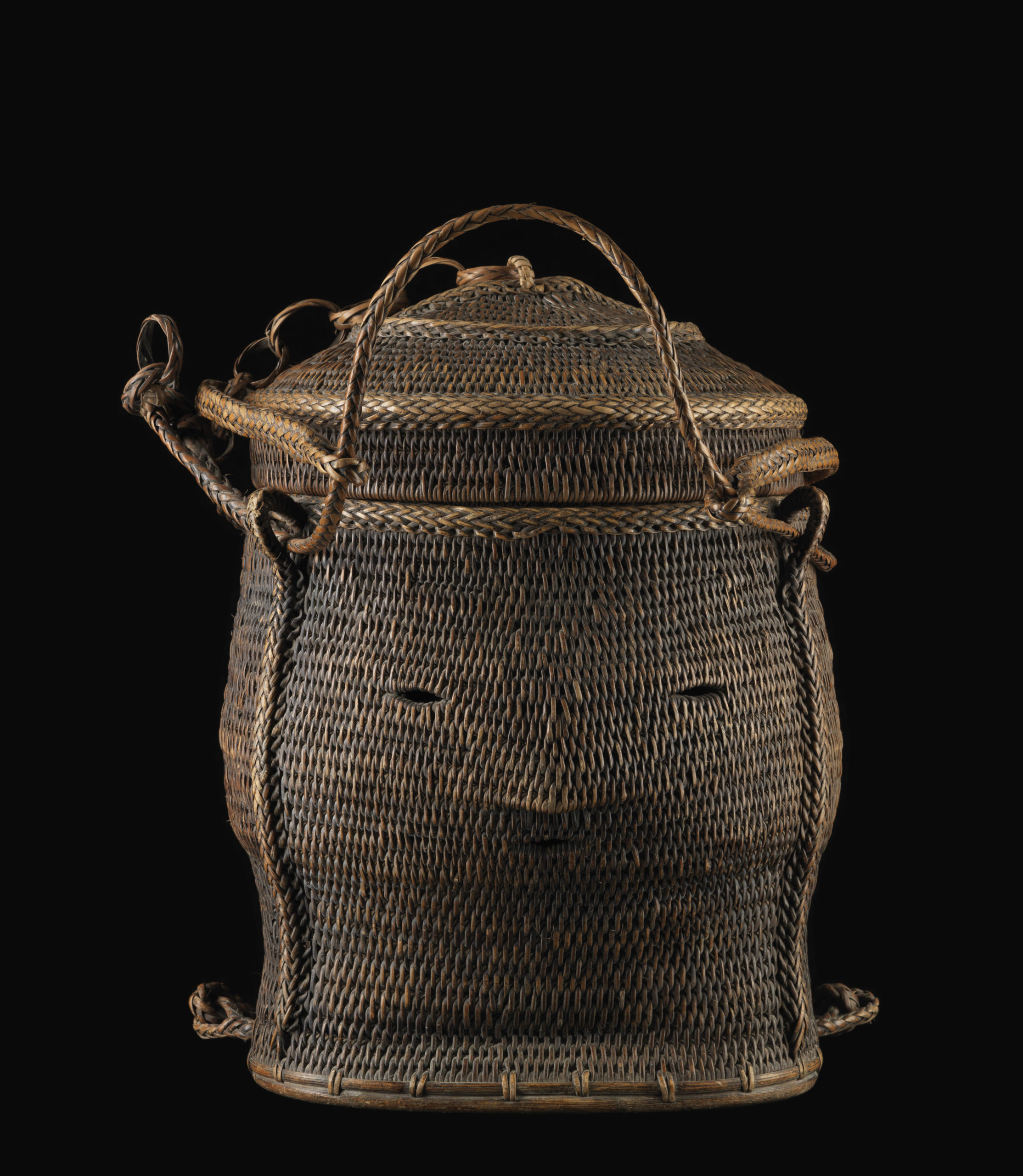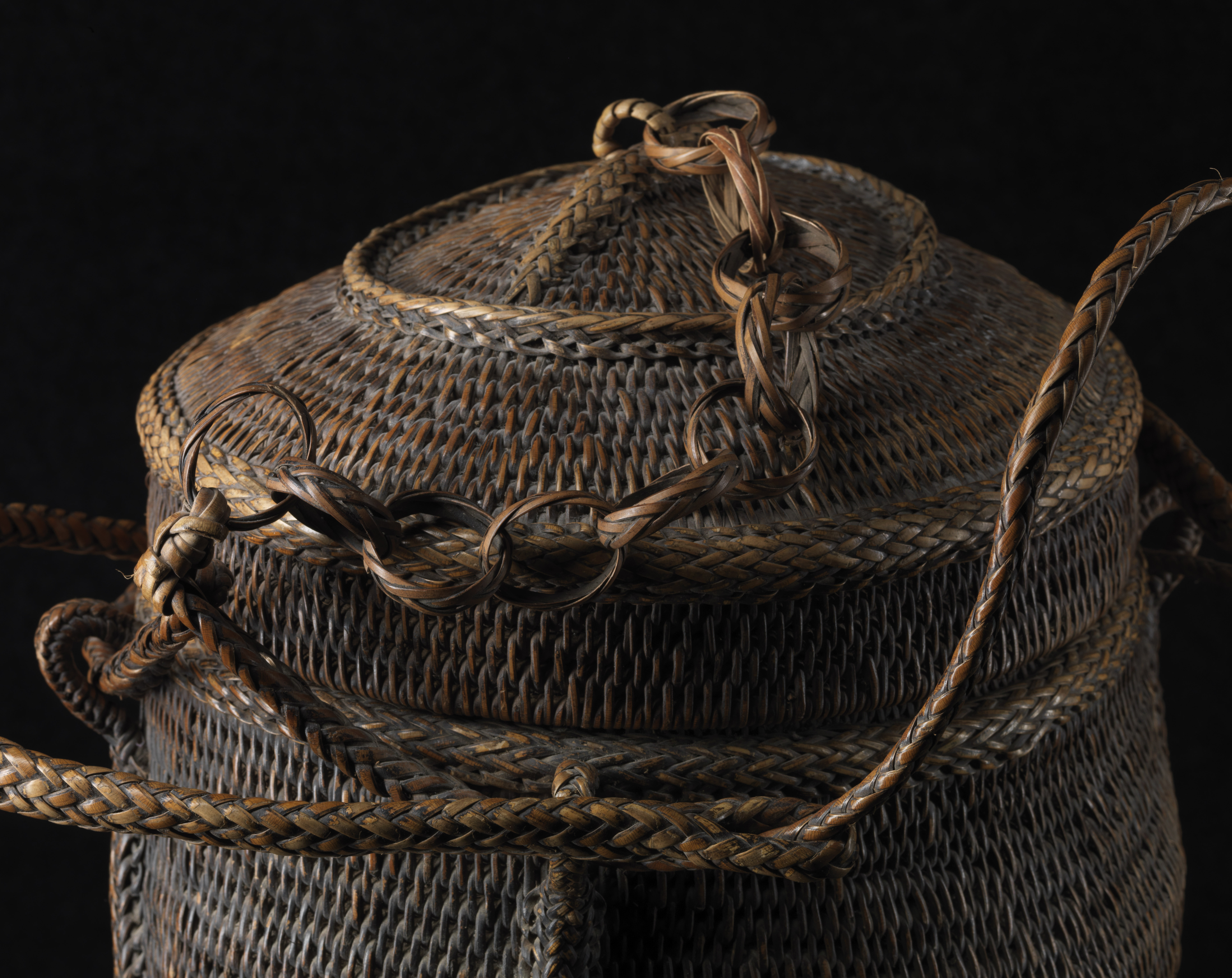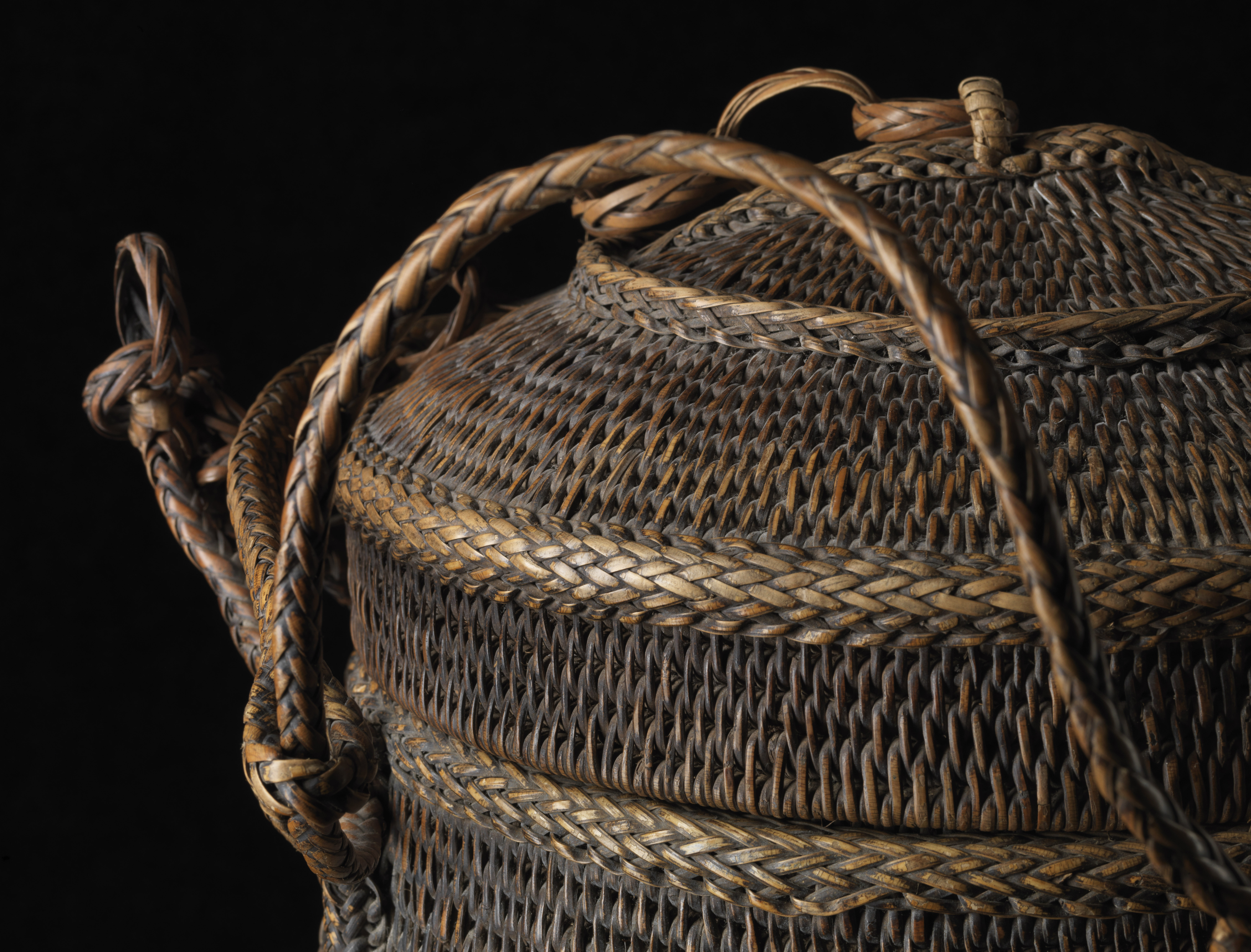Basket with lid “tayaan“
The wickerwork of the Igorot culture represents a category of objects of high technical and artistic value. The use of wickerwork is even more widespread among the Igorot than among the other ethnic groups of the Southeast Asian archipelago. Baskets are used for daily use as containers in a household instead of vessels made of wood, ceramics, porcelain or metal, for example for transporting yarrows of rice, sweet potatoes, vegetables etc. from the field to home, sometimes also for meat or fertiliser. They are indispensable universal means of transport in the mountains, where it is not possible to use carts or pack animals in the terraced rice fields. Men use a device consisting of two gimata baskets suspended from the ends of a strong pole to transport heavy loads. The baskets are built on a square bamboo frame and have no lid. Women, on the other hand, usually carry their loads in a single basket of tayaan (bontoc) on their head when working in the fields, on the way to market or to festivals. The latter is also used in a somewhat smaller version in the household as a storage container.
Another very common type of transport basket is the rucksack, which consists of a bamboo frame with rattan weave and carrying straps. Mostly it also has a lid to put on, in which case the carrying straps are attached so that they pass through a loop of the lid, thus securing the contents against loss. Backpacks with lids are called hape’eng for the Ifugao and sangi for the Bontok. If they do not have a lid, they are called pasiking in the case of the Bontok from the Tanulog and Fidelisan region of Mountain Province. Also very important is the use of baskets for throwing the grain, a work that was or is done daily by the women. Of course, wickerwork is also used in all forms of agriculture or for hunting and fishing purposes. An example is the sieve badyu of the Ifugao, which is used to catch edible snails in the flooded rice fields before new shoots are planted. The fields are also used to catch fish in Ifugao weirs.
Apart from being used for everyday purposes, special baskets such as the one presented here are also used for ritual purposes in celebrations of rites of passage, wars, headhunts. They are used, for example, as vessels for cooked rice at all ceremonies such as births and weddings, as baskets in which food, drinks, money and betel cutlery are placed as food for the souls of the deceased, as baskets in which sacrifices are made for ancestors in healing processes, and as a vessel for common ritual property (such as the heads of high-ranking opponents) of a clan. In the past, head baskets with lids, tayaan, were used to transport the captured heads. The basket presented here probably falls into this category. However, since head hunting has been unusual for many decades and this basket dates from the middle of the 20th century, a use for food sacrifices in the context of festivals might be considered. The deposited symbolism of the head as a cornucopia is nevertheless unmistakable due to its clear design. The basket is a masterpiece of wickerwork.
| Object | basket with lid “tayaan“ |
| Culture | Northern Philippines, Luzon, Igorot, Bontoc |
| Time | 20th century |
| Dimensions | Height 39 cm, width 27 cm |
| Material | Rattan |








